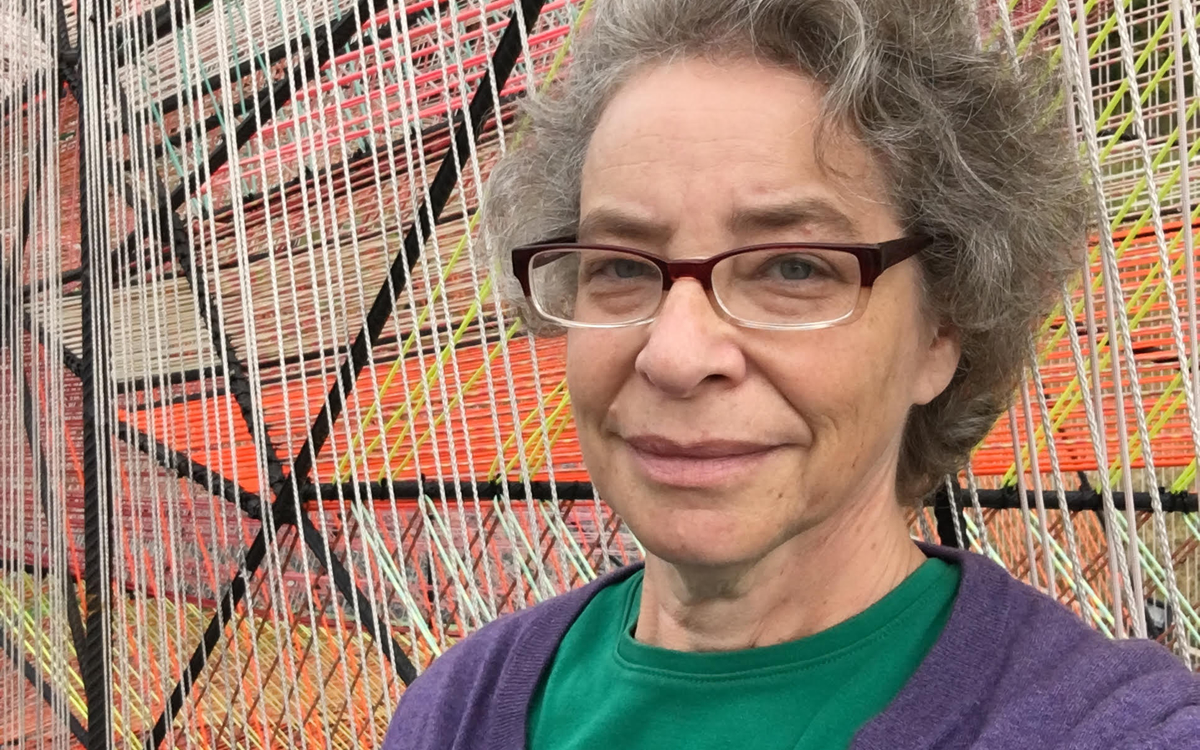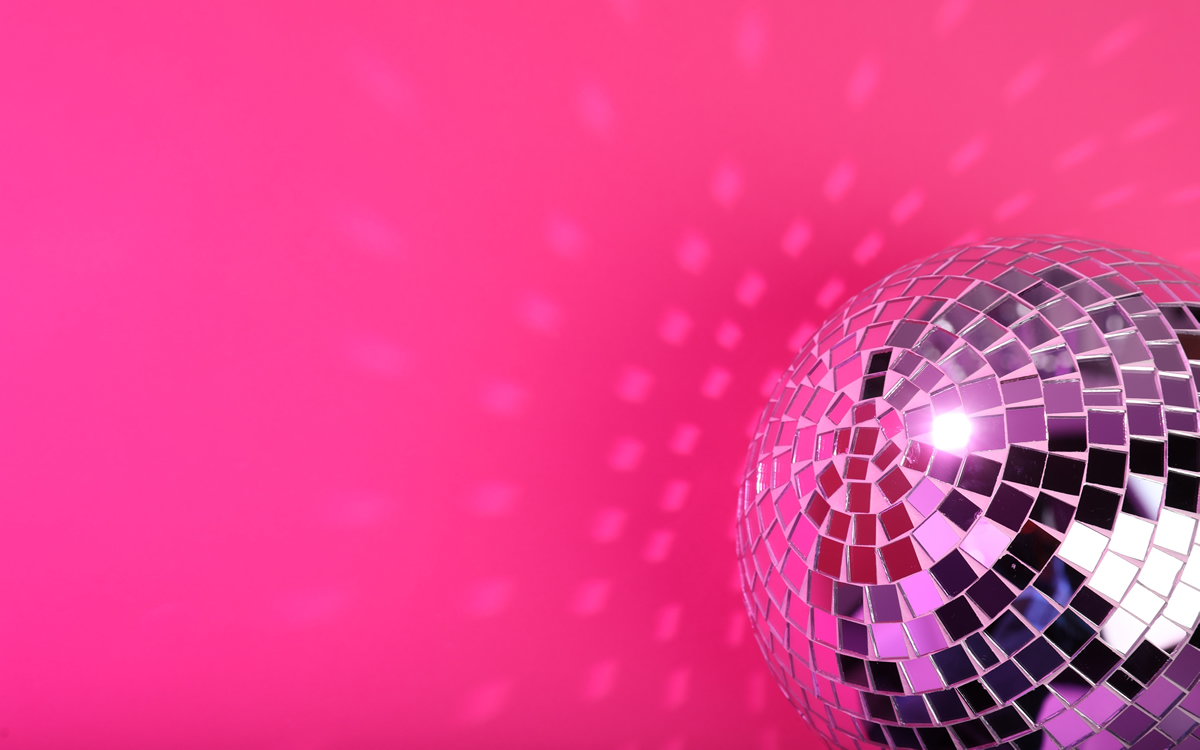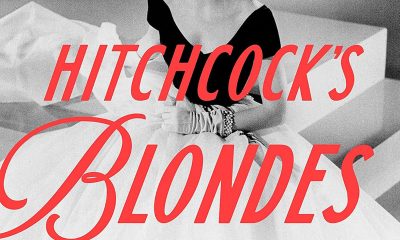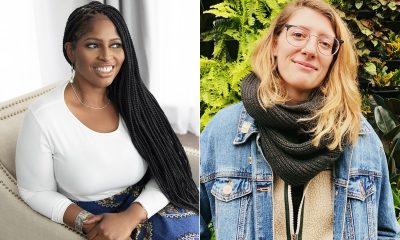Arts & Entertainment
‘D.C. queer poets doing some of the most innovative writing’
Kim Roberts on Washington as home to thriving poetry scene

Cheer up! There’s hope! April isn’t just for filing your taxes. It’s National Poetry Month!
Few people are more important — more vital — to poetry in Washington, D.C. than queer poet, editor, and literary historian Kim Roberts.
It’s hard to imagine any bard in the D.C. region who hasn’t been enriched by Roberts’s editing, poetry, or understanding of history.
“Kim Roberts brings the past and present together with elegance and intelligence,” said Maryland Poet Laureate Grace Cavalieri in an email to the Blade.
“Poetry’s past has gone nowhere at all, thankfully, because of Kim’s work,” Cavalieri, producer and host of the public radio show and Apple podcast “The Poet and the Poem,” said.
D.C. has been home to numerous poets from its founding to the Civil War to World War I to World War II to our COVID era, Roberts, 60, told the Blade in an interview.
“D.C. is a company town like Las Vegas,” Roberts, who moved to Washington, D.C. 35 years ago, said. “Because the federal government is here, people don’t think there’s poetry in D.C.”
“We get overlooked,” she added.
You might think poetry is a snooze or only for residents of Mount Olympus who are untethered to earthly hopes, fears, loves and losses. But you’d be wrong.
All sorts of people – from politicos to journalists to teachers to lovers to mourners — seek out and write poetry.
“You turn to poetry in times of great emotion like funerals and weddings,” said Roberts, who is the author of six books of poems.
Recently, this hit close to home for Roberts. “COVID’s been so hard for so many people,” she said, “I feel a bit guilty. Because at my age, I fell in love during the pandemic!”
Roberts was gobsmacked (in a good way) by love — she didn’t expect to find it so late in life.
At this transformative juncture, Roberts turned to poetry. “My style changed,” she said, “I became confessional.”
Much of her previous poetry has been about other people. The poems in her 2015 collection “Fortune’s Favor: Scott in the Antarctic,” for example, are in the “voice” of explorer Robert Falcon Scott.
“The Scientific Method,” her 2017 book, combines poems about Thomas Alva Edison and Carl Sagan, “the strange mating habits of invertebrates and fish, and rondeaux about the United States presidents,” Roberts writes on her website (kimroberts.org).
Roberts’s poems about her love for her girlfriend Tracey are personal. They are filled with passion and desire.
Five of her love poems are just out from The Last Press. Roberts is the third poet to be featured in an ongoing series of accordion-fold, hand letter press poems called “Quire.” If you don’t feel the passion pulsating through Roberts love poems, check your pulse.
“My desire for you this evening/is not done, where I bridge/inopportune distance,” Roberts writes in her poem “On Roosevelt Bridge,” one of the poems in the “Quire” series, “where I cross/the river into my city, fluid/ around my heart.”
“There’s an ocean inside my belly,” Roberts writes in “Another Lapping Refrain,” one of her “Quire” poems, “and you’re making my tide rise/I want to apologize to the shore/for my past indifference to its beauty.”
The pandemic gave her permission to try different types of projects, Roberts said. One of the things she and her friend Robert Revere, a photographer, missed during the shutdowns was going to museums. Roberts and Revere co-created “Corona/Crown,” a 14-part prose poem with photographs.
“We created a “museum of our own,” Roberts said. “We combined how we imagined people would interact with visual culture with photos of real places.”
“Corona/Crown” will be published as a chapbook by WordTech Editions in the winter of 2023.
Since childhood, Roberts has felt a strong connection to the English language. “I loved the musicality of words. I made up rhymes and stories,” Roberts said, “it’s inevitable that I would write.”
Roberts earned a B.F.A. in creative writing from Emerson College, and an M.F.A. in poetry from the University of Arizona. In 2000, Roberts became the founding editor of “Beltway Poetry Quarterly,” an acclaimed journal that publishes D.C.-area poets. She retired from editing “Beltway” in 2019.
“Beltway” has published many queer poets (including a special LGBTQ issue). Richard Blanco, Regie Cabico, Jona Colson, Cheryl Clarke and Angelina Weld are among the queer poets whose work has appeared in “Beltway.”
“Publishing queer writers helps us see ourselves as part of a special literature,” Roberts said.
Roberts began to explore the history of Washington, D.C. decades ago when she arrived in D.C. “It helped me to feel connected to the city,” she said.
The anthology “By Broad Potomac’s Shore: Great Poems from the Early Days of Our Nation’s Capital,” which Roberts edited, came out in 2020. The collection covers poets, born between 1800 to 1900 through the Civil War, Reconstruction and World War I.
Their work “spans the gamut form traditional Victorian-era sentimentality through the beginnings of literary modernism,” Roberts writes in the preface.
Everyone knows about Whitman being queer, Roberts said. The anthology’s title comes from Whitman’s poem with the same title. But there have been many other queer poets throughout D.C.’s history, Roberts said.
Take Natalie Clifford Barney, a feminist poet, who lived from 1876 to 1972. Barney spent her early years in D.C. She hosted salons in Paris for artists for more than 60 years. “She was the first woman to write openly about lesbian love since Sappho,” Roberts said.
“The full-sailed rising of your body’s sweep/ – Adrift and safe on joy’s last tidal wave —,” Barney wrote in her poem “How Write the Beat of Love,” “Will toss you on the silver sands of sleep/Forgetful of the ecstasy you gave.”
Other queer poets in the “By Broad Potomac’s Shore” anthology range from Charles Warren Stoddard, whose homoerotic writing about the natives of the South Seas was inspired by Whitman’s “Calamus” poems to Rose Elizabeth Cleveland, first lady for two years for her bachelor brother President Grover Cleveland.
Roberts is as committed to LGBTQ poetry in our time in D.C. as she is to queer poetry in the city’s past.
Roberts and filmmaker Jon Gann are co-coordinating the DC Queer Pride Poem-a-Day project. In June, the Project will feature 30 poets reading a poem in short videos online. One poem will be released daily. The website will stay up after Pride. (This reporter is one of the poets who will be featured in the Project.)
“D.C. queer poets now are doing some of the most imaginative, innovative writing,” Roberts said. “It’s important to document the writing of our time.”
Bars & Parties
Mixtape Sapphics hosts holiday party on Dec. 13
‘Sugar & Spice’ night planned for Saturday

Mixtape Sapphics will host “Sapphic Sugar & Spice: A Naughty-Nice Mixtape Holiday Party” on Saturday, Dec. 13 at 4 p.m. at Amsterdam Lounge.
This is a festive, grown holiday party for queer women and sapphics 35 and older at Revolt’s Christmas pop-up. There will be music, joy, and an optional White Elephant.
This is Mixtape Sapphics’ first-ever holiday party — a cozy, flirty, intentionally grounded night created just for queer women and sapphics 35+ who want real connection, festive joy, and a warm place to land at the end of the year.
Tickets start at $13.26 and can be purchased on Eventbrite.

Friday, December 12
“Center Aging Friday Tea Time” will be at 12 p.m. in person at the DC Center for the LGBT Community’s new location at 1827 Wiltberger St., N.W. To RSVP, visit the DC Center’s website or email [email protected].
Go Gay DC will host “LGBTQ+ Community Happy Hour” at 7 p.m. at Freddie’s Beach Bar and Restaurant. This event is ideal for making new friends, professional networking, idea-sharing, and community building. This event is free and more details are available on Eventbrite.
Women in Their Twenties and Thirties will be at 8 p.m. on Zoom. This is a social discussion group for queer women in the Washington, D.C. area. For more details, go to Facebook.
Saturday, December 13
Go Gay DC will host “LGBTQ+ Community Brunch” at 12 p.m. at Freddie’s Beach Bar & Restaurant. This fun weekly event brings the DMV area LGBTQ+ community, including allies, together for delicious food and conversation. Attendance is free and more details are available on Eventbrite.
The DC Center for the LGBT Community will host “Sunday Supper on Saturday” at 2 p.m. D.C.’s queer community will gather for good food, laughter, and community. For more information, email [email protected].
Sunday, December 14
SADBrunch will host “HokiSlay Drag Brunch” at 12 p.m. at Throw Social. This festive affair brings fierce performances, over-the-top holiday looks, and more sparkle than a tinsel explosion. Expect powerhouse lip-syncs, laughter, and cheer hotter than your spiked cocoa. Cake Pop will host the event. Tickets cost $28.52 and are available on Eventbrite.
Monday, December 15
“Center Aging: Monday Coffee Klatch” will be at 10 a.m. on Zoom. This is a social hour for older LGBTQ+ adults. Guests are encouraged to bring a beverage of choice. For more information, contact Adam ([email protected]).
Genderqueer DC will be at 7 p.m. on Zoom. This is a support group for people who identify outside of the gender binary, whether you’re bigender, agender, genderfluid, or just know that you’re not 100% cis. For more details, visit genderqueerdc.org or Facebook.
Tuesday, December 16
Center Bi+ Roundtable will be at 7 p.m. on Zoom. This is an opportunity for people to gather and discuss issues related to bisexuality or as Bi individuals in a private setting. Visit Facebook or Meetup for more information.
The DC Center for the LGBT Community will host “Self-Defense Class with Avi Rome” at 12:30 p.m. Rome is a proud member of the LGBTQ community and a full-time martial arts instructor with 25 years of teaching experience. He holds a Fifth Degree Black Belt in Jhoon Rhee Tae Kwon Do and is the director of the studio’s Adaptive Tae Kwon Do program for students with special needs. He has also run numerous self-defense workshops for various groups and situations. For more details, visit the center’s website.
Wednesday, December 17
Job Club will be at 6 p.m. on Zoom upon request. This is a weekly job support program to help job entrants and seekers, including the long-term unemployed, improve self-confidence, motivation, resilience and productivity for effective job searches and networking — allowing participants to move away from being merely “applicants” toward being “candidates.” For more information, email [email protected] or visit thedccenter.org/careers.
Asexual and Aromantic Group will be at 7 p.m. on Zoom. This is a space where people who are questioning this aspect of their identity or those who identify as asexual and/or aromantic can come together, share stories and experiences, and discuss various topics. For more details, email [email protected].
Thursday, December 18
The DC Center’s Fresh Produce Program will be held all day at the DC Center for the LGBT Community. People will be informed on Wednesday at 5 p.m. if they are picked to receive a produce box. No proof of residency or income is required. For more information, email [email protected] or call 202-682-2245.
Virtual Yoga Class will be at 7 p.m. on Zoom. This free weekly class is a combination of yoga, breath work and meditation that allows LGBTQ+ community members to continue their healing journey with somatic and mindfulness practices. For more details, visit the DC Center’s website.
Egypt
Iran, Egypt object to playing in Seattle World Cup ‘Pride Match’
Game to take place on June 26

Iran and Egypt have objected to playing in a “Pride Match” that will take place in Seattle during the 2026 World Cup.
The Egyptian Football Association on Tuesday said it told FIFA Secretary General Mattias Grafström in a letter that “it categorically rejects holding any activities related to supporting (homosexuality) during the match between the Egyptian national team and Iran, scheduled to be held in Seattle, USA, on June 26, 2026, in the third round of the group stage of the 2026 World Cup.” Football Federation Islamic Republic of Iran President Mehdi Taj told ISNA, a semi-official Iranian news agency that both his country and Egypt “protested this issue.”
The 2026 World Cup will take place in the U.S., Canada, and Mexico. The draw took place at the Kennedy Center on Dec. 5.
Iran is among the handful of countries in which consensual same-sex sexual relations remain punishable by death.
The State Department’s 2023 human rights report notes that while Egyptian law “did not explicitly criminalize consensual same-sex sexual activity, authorities regularly arrested and prosecuted LGBTQI+ persons on charges including ‘debauchery,’ prostitution, and ‘violating family values.’” Egyptian authorities “also reportedly prosecuted LGBTQI+ individuals for ‘misuse of social media.’”
“This resulted in de facto criminalization of same-sex conduct and identity,” notes the report.
The 2024 human rights report the State Department released earlier this year did not include LGBTQ-specific references.
Soccer has ‘unique power to unite people across borders, cultures, and beliefs’
The June 26 match between Iran and Egypt coincides with Seattle Pride. The Washington Post reported the Seattle FIFA World Cup 2026 Local Organizing Committee decided to hold the “Pride Match” before last week’s draw.
“As the Local Organizing Committee, SeattleFWC26’s role is to prepare our city to host the matches and manage the city experience outside of Seattle Stadium,” said SeattleFWC26 Vice President of Communications Hana Tadesse in a statement the committee sent to the Washington Blade on Wednesday. “SeattleFWC26 is moving forward as planned with our community programming outside the stadium during Pride weekend and throughout the tournament, partnering with LGBTQ+ leaders, artists, and business owners to elevate existing Pride celebrations across Washington.”
“Football has a unique power to unite people across borders, cultures, and beliefs,” added Tadeese. “The Pacific Northwest is home to one of the nation’s largest Iranian-American communities, a thriving Egyptian diaspora, and rich communities representing all nations we’re hosting in Seattle. We’re committed to ensuring all residents and visitors experience the warmth, respect, and dignity that defines our region.”
The 2034 World Cup will take place in Saudi Arabia.
Consensual same-sex sexual relations remain punishable by death in the country. The 2022 World Cup took place in neighboring Qatar, despite concerns over the country’s anti-LGBTQ rights record.
-

 Congress1 day ago
Congress1 day agoEXCLUSIVE: George Santos speaks out on prison, Trump pardon, and more
-

 Health4 days ago
Health4 days agoThe harsh truth about HIV phobia in gay dating
-

 Arts & Entertainment5 days ago
Arts & Entertainment5 days agoCynthia Erivo, Eva Victor, and ‘Blue Moon’ bring queer representation to Golden Globe film nominations
-

 Spain3 days ago
Spain3 days agoVictory Institute honors transgender Spanish senator in D.C.




















